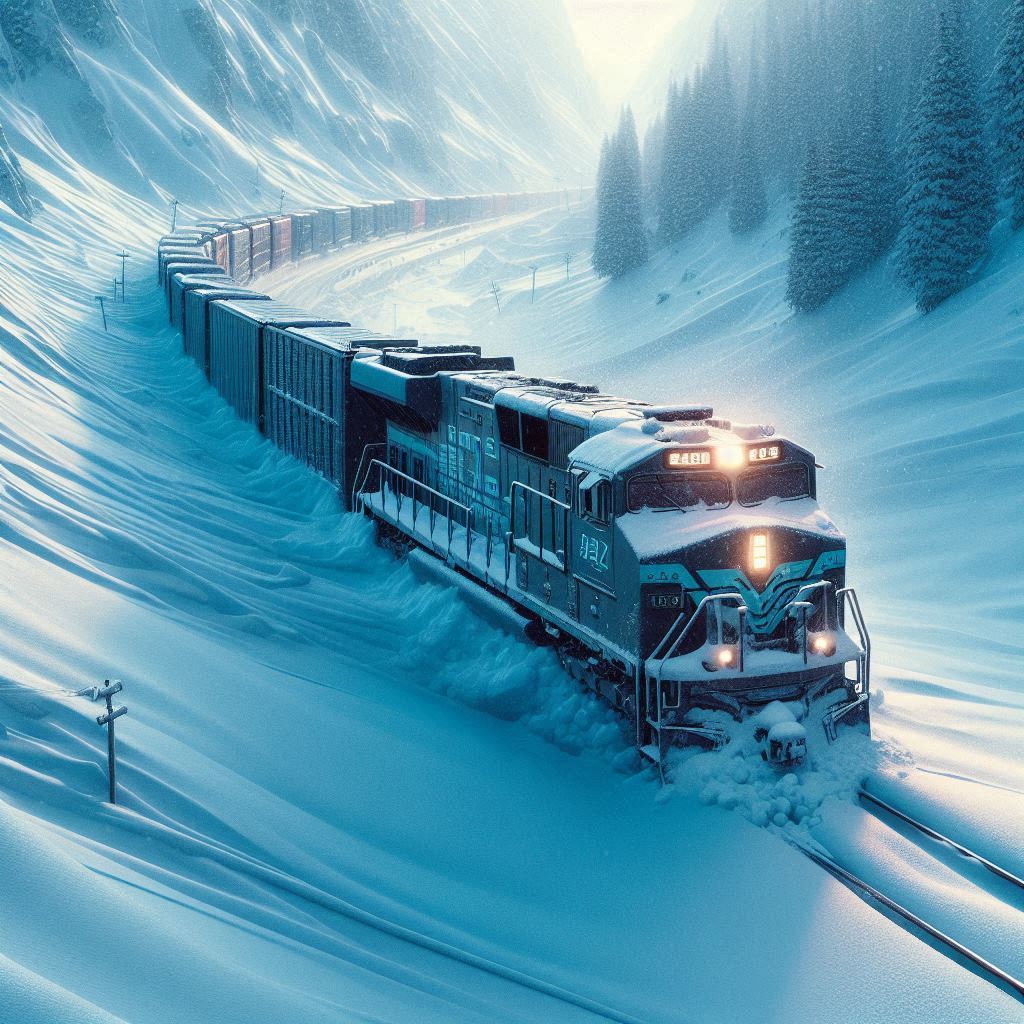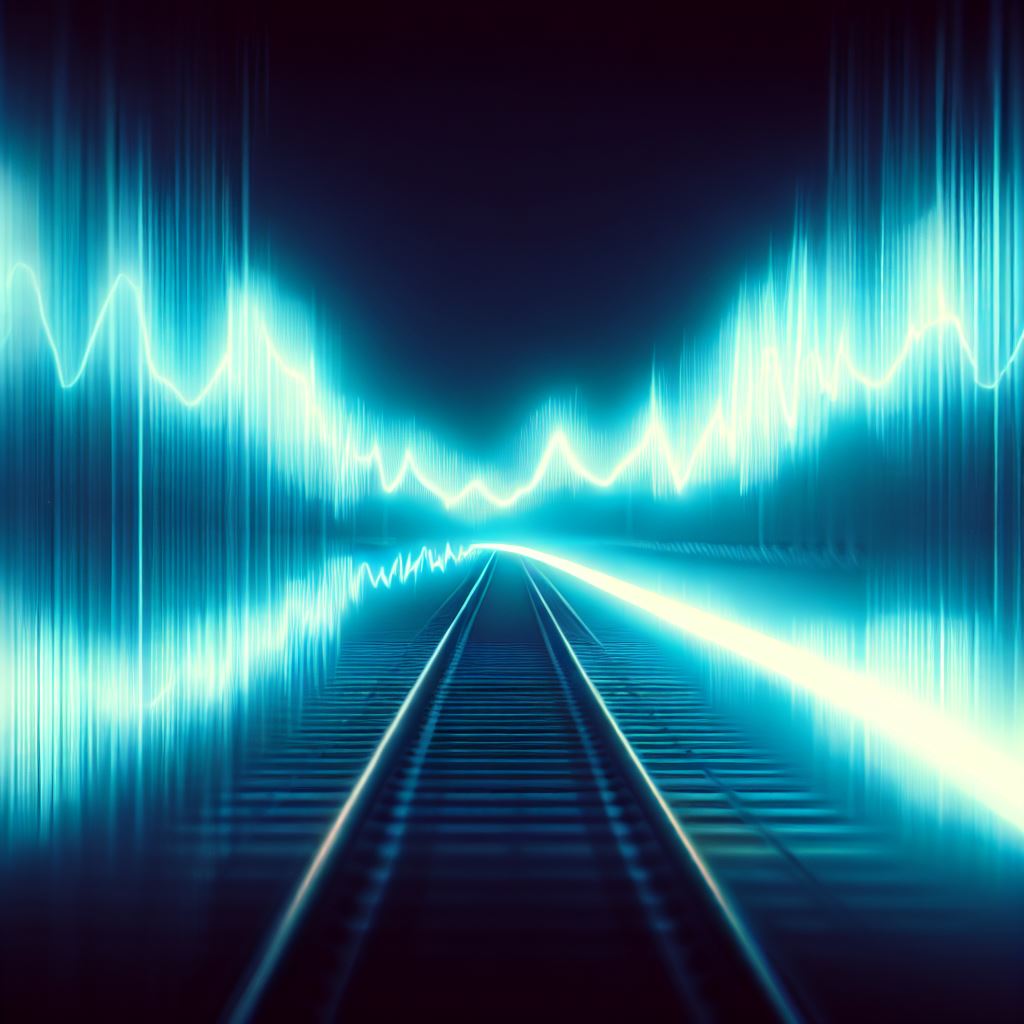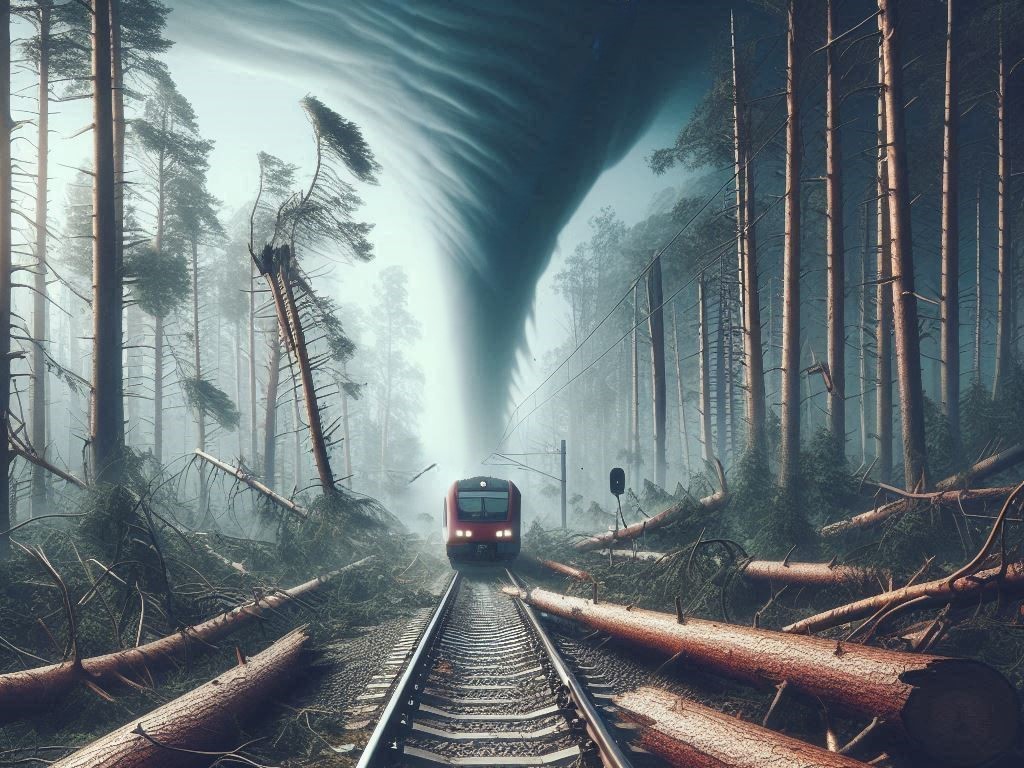While railways are often praised as a sustainable / low emission / low carbon mode of transportation, the reality is that climate change increasingly threatens their smooth journeys just like every other form of transport – perhaps even more so. From scorching heatwaves, to rising sea levels, heavy rain and more severe storms, the changing climate poses increasing and serious challenges for these vital arteries of travel and commerce.
In this series of blogs, I explore the weather and climate effect on the railway and a few ways to provide greater resilience and better asset intelligence. This is the first one, so let’s get hot under the collar and discuss HEAT.
Heat
Heatwaves and hot temperatures stress many aspects of railway infrastructure. They can cause tracks to buckle, electrification wires to droop, and signalling equipment to overheat, disrupting train schedules with the potential for derailments or dewirements causing even more delays. Let us not forget the passenger too who, should the train or infrastructure break down, may be stuck inside a sealed metal tubes with no aircon slightly reminiscent of ancient torture with the brazen bull of Phalaris.
Let’s look at some of the main challenges heat poses to threaten railway infrastructure reliability.
Rail
Steel expands when it gets hotter. A 1km piece of continuously welded steel rail 'grows' by around 1cm for every degree centigrade temperature rise. As rail temperatures can be 20 degrees above air temperature, (Think of how hot your car roof gets in the sun), there can be quite a length change to accommodate. To do this rail is commonly ‘stretched' when we install it. As the rail expands with increasing temperature the 'stretch' is used up, and eventually at a special temperature there is no stretching stress left in the rail. This is named the "Stress Free Temperature" or "Stress Neutral Temperature". Above this temperature the rail is in compression and if that compression force gets too high you can get this...
To resist track buckling / heat buckles / sun kink, there are a few tools in the box we can deploy.
- We can stop the rails getting as hot, (Yes really!)
- We can stretch the rails more during installation, or
- Increase the stability of the track.
To reduce how hot the rails get you can paint the rails white which limits their temperature gain from the sun. You can achieve a 5-10°C rail temperature reduction which certainly helps, and white painting is routine in some countries such as Italy. In the UK (where I am based) white paint application is usually restricted to around switches and crossings (which also suffer reliability issues when rails expand due to the precise geometries needed).
The second method is stretching the rails more during installation. This achieves a higher stress neutral temperature but has the side effect of also increases the track stress in winter as the rails contract at lower temperatures. This increased rail stress increases the risk of rail failure / pull apart, so a careful balance must be struck. A further variation of this option is to change the track stress (Stress Neutral Temperature), between summer and winter as some networks with extreme seasonal temperature fluctuations do.
The last method, although the most robust fix, is hugely expensive and disruptive as it involves replacing conventional ballasted track with concrete slab tracks. It just isn't practical for the limited number of days disruption caused currently.
How can modern technology help?
There is a plethora of rail temperature measurement sensors which can remotely monitor rail temperature and highlight excessive temperatures to operations teams. However, they are only an indirect measurement of the likelihood of track buckling, as the primary drivers are the stress state of the rail (which is problematic to measure directly), and the lateral resistance of the track, which isn’t something we can easily measure outside the laboratory.
Can we measure a track buckle happening?
There are displacement and acceleration sensors that can measure a change in track displacement, but they would need to be exactly at the point of the track movement (which is difficult to predict).
Can Distributed Acoustic Sensing hear a track buckle happen?
My answer is probably - yes, although it isn’t something we commercially offer at Sensonic currently. We already ‘hear’ the much quieter normal expansion and contraction of rails in service , and we detect vibrations from rapid ground movements to send rockfall and landslide alarms. So, if a rapid track buckle happened (as in the video above), then yes, I’m confident we could hear it. We’d need to work with a railway to refine it and establish the practicalities of triggering alarms etc, but it is certainly in the realm of the possible. So, if that is of interest then get in touch.
Overhead Catenary
Turning our attention upward to overhead electrification wires, the thermal expansion for copper is higher than that for steel. As most overhead electrification relies on tension to keep the contact wire at the correct height above the train, a tensioning system is designed to cope with a certain degree of temperature variation.
Different tensioning systems exist but weights dangling from a pole are usually the easiest for people to understand. As the temperature goes up the wire grows, and the weights go down. If the weights get to the floor tension in the contact wire is reduced or lost entirely and the wire begins to sag.
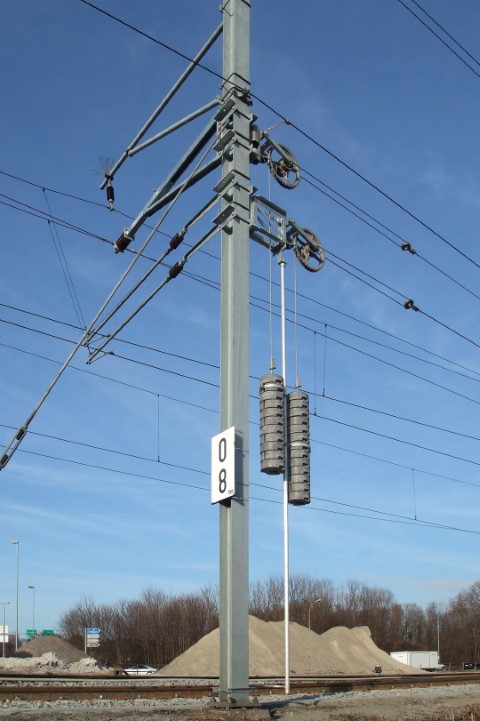
Catenary Tension Weights - Image from Kecko, CC BY 2.0 via Wikimedia Commons
Having 25,000 volts in the wrong place can certainly ruin a passenger’s day, both as the train stops due to damaged wires or pantograph, is compounded by being in a sealed metal tube, by having no aircon (due to no power) and in the high temperatures that caused the issue to start with.
Electrification systems can be designed to work over larger temperature ranges by making the wire runs shorter, or tensioning towers taller - but this increases the cost, a deeply unpopular decision to take during the design stage.
There are numerous ways to monitor the catenary tension, (or lack of it), either directly with strain gauges, through measurement of the tensioning system such as monitoring the weight’s position via sensors or even visually. We can also accurately locate flashover faults via our Catenary Flashover Location application, to find faults quickly and accurately so service can be resumed more rapidly.
Earthworks
Extended periods of hot and dry weather alter the water content of the ground the railway is supported by. Inside railway earthworks such as embankments or cuttings, particularly those not built to modern standards, shrinkage can result from the loss of water. This can cause track alignment issues particularly where shrinkage is uneven or cavities form. In severe cases subsidence can affect safe railway operations.
Earthworks failures often require extensive remediation works to get traffic flowing normally again. It is often said "Water is the greatest enemy of the railway" - However, sometimes the extended lack of it can cause trouble too.
There are several ways to monitor earthworks, from simple visual inspection through to specialist instrumentation to monitor slope stability 24/7. Distributed acoustic sensing can help to warn of sudden ground movements in real-time, such as those from landslide / landslip or perhaps even sudden subsidence over sink holes or collapsed culverts. DAS sensing is ideal for this as it covers long routes comprehensively and quickly with no trackside forest of sensors to install or maintain. (See how many slope monitoring sensors you could save).
Control Equipment / Electronics
Virtually all modern rail network traffic is controlled by electronics or electrical systems, and those systems are designed to fail-safe. When something goes wrong and some component or equipment fails, then near universally trains are commanded to stop moving to keep people safe. The disruption from signalling or traction power failures can be significant and cover a wide area, and rolling stock electronics are increasingly complex and numerous.
Electronics and electrical components hate getting hot. A rule of thumb that says for every 10°C temperature rise, a component lifetime halves. We know this and so we monitor temperatures and ventilate or cool our server and relay rooms to prevent them becoming excessively hot. So, I ask why we have so many lineside cabinets painted dark green or grey? Surely white or light colours would be better to reduce solar gain and avoid the need for active cooling solutions as much as possible in the future.
One elegant solution spotted for off-grid locations, is to use solar panels to both power and shade equipment cabinets from direct sunlight.
Fire
Long dry spells and hot temperatures can create conditions where wildfires can thrive, particularly where lineside vegetation management hasn't been kept on top of. Fires can vary in scale from the inconvenient to the disastrous. Whilst fires started by normal railway operations (excluding rail grinding) are thankfully rare, the long asset boundaries of the railway are not respected by a raging blaze and the impact on operations can be severe particularly where lineside equipment is damaged as in the example below.
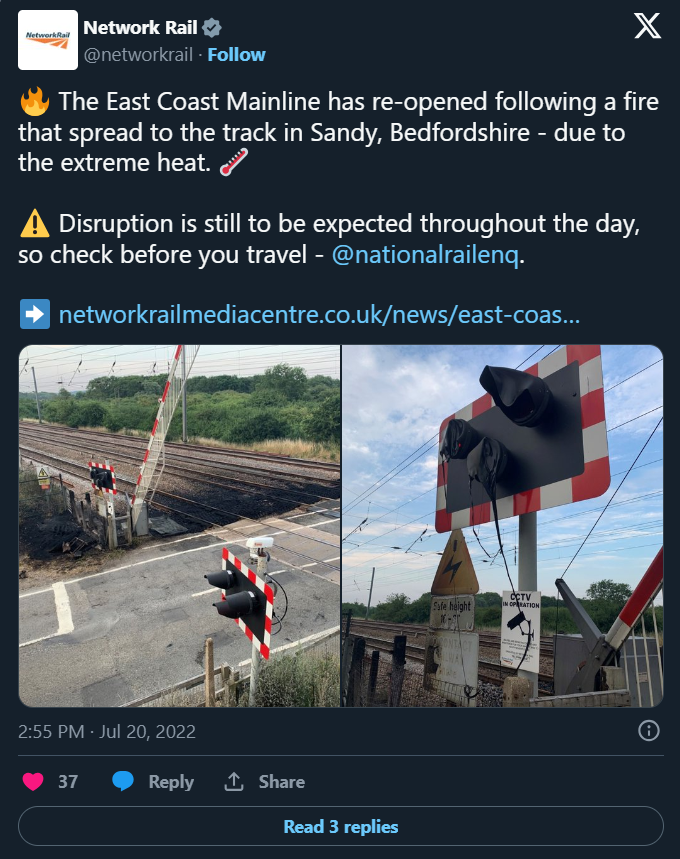
A related issue can be cable fires resulting from overheating or damage. Cables are often out of sight in cable ducts or below ground so fires and damage can be difficult to accurately locate. Fiber optic sensing can be used to monitor cable temperature along its length via a technology called Distributed Temperature Sensing (DTS), and both DTS and DAS can detect the location of broken or damaged cables/fibers.
Summary
In conclusion, climate change throws a fiery gauntlet at the world's railways. From scorching heat causing track buckling and electrical issues to drier ground leading to earthwork problems, extreme temperatures pose significant challenges to rail infrastructure. However, a combination of preventative measures and advanced monitoring systems, such as distributed acoustic sensing, can be used to build a more resilient railway network prepared to weather the storms – literally and metaphorically.
This series of articles has touched on some of the challenges that climate change and increasingly extreme weather poses for the railway and some of the ways it can rise to these challenges. If you’ve missed any of them, you can find links here:
